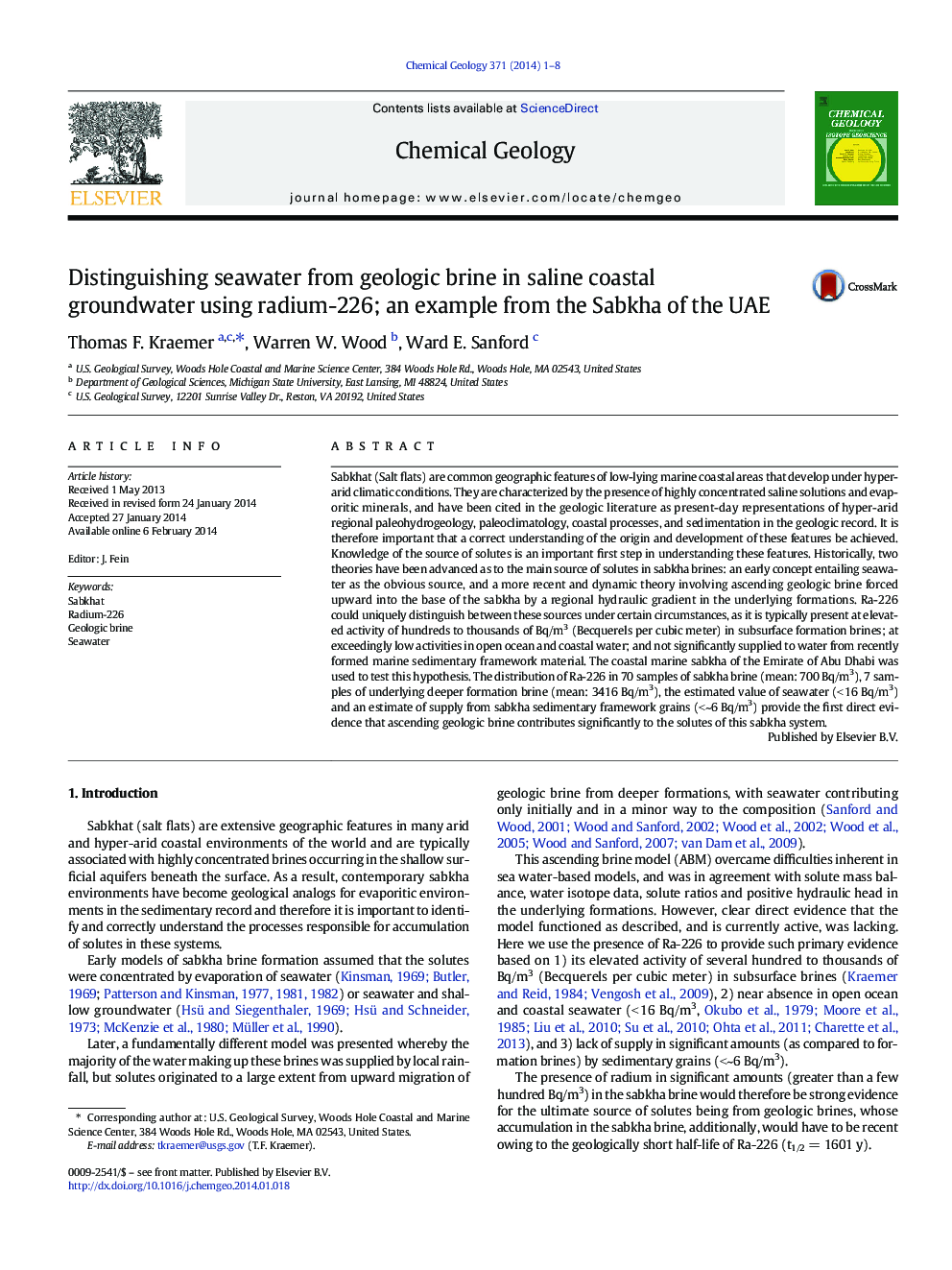| کد مقاله | کد نشریه | سال انتشار | مقاله انگلیسی | نسخه تمام متن |
|---|---|---|---|---|
| 4698755 | 1637599 | 2014 | 8 صفحه PDF | دانلود رایگان |
عنوان انگلیسی مقاله ISI
Distinguishing seawater from geologic brine in saline coastal groundwater using radium-226; an example from the Sabkha of the UAE
ترجمه فارسی عنوان
جداسازی آب دریا از نمک های زمین شناسی در آب های زیرزمینی سالن ساحلی با استفاده از رادیوم 226؛ یک مثال از صباح امارات متحده عربی
دانلود مقاله + سفارش ترجمه
دانلود مقاله ISI انگلیسی
رایگان برای ایرانیان
کلمات کلیدی
صباحت، رادیوم 226، نمک معدنی، آب دریا
موضوعات مرتبط
مهندسی و علوم پایه
علوم زمین و سیارات
ژئوشیمی و پترولوژی
چکیده انگلیسی
Sabkhat (Salt flats) are common geographic features of low-lying marine coastal areas that develop under hyper-arid climatic conditions. They are characterized by the presence of highly concentrated saline solutions and evaporitic minerals, and have been cited in the geologic literature as present-day representations of hyper-arid regional paleohydrogeology, paleoclimatology, coastal processes, and sedimentation in the geologic record. It is therefore important that a correct understanding of the origin and development of these features be achieved. Knowledge of the source of solutes is an important first step in understanding these features. Historically, two theories have been advanced as to the main source of solutes in sabkha brines: an early concept entailing seawater as the obvious source, and a more recent and dynamic theory involving ascending geologic brine forced upward into the base of the sabkha by a regional hydraulic gradient in the underlying formations. Ra-226 could uniquely distinguish between these sources under certain circumstances, as it is typically present at elevated activity of hundreds to thousands of Bq/m3 (Becquerels per cubic meter) in subsurface formation brines; at exceedingly low activities in open ocean and coastal water; and not significantly supplied to water from recently formed marine sedimentary framework material. The coastal marine sabkha of the Emirate of Abu Dhabi was used to test this hypothesis. The distribution of Ra-226 in 70 samples of sabkha brine (mean: 700Â Bq/m3), 7 samples of underlying deeper formation brine (mean: 3416Â Bq/m3), the estimated value of seawater (<Â 16Â Bq/m3) and an estimate of supply from sabkha sedimentary framework grains (<~6Â Bq/m3) provide the first direct evidence that ascending geologic brine contributes significantly to the solutes of this sabkha system.
ناشر
Database: Elsevier - ScienceDirect (ساینس دایرکت)
Journal: Chemical Geology - Volume 371, 15 April 2014, Pages 1-8
Journal: Chemical Geology - Volume 371, 15 April 2014, Pages 1-8
نویسندگان
Thomas F. Kraemer, Warren W. Wood, Ward E. Sanford,
